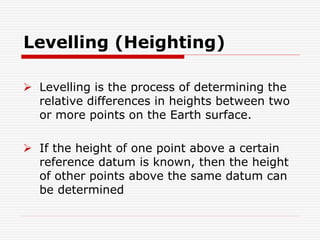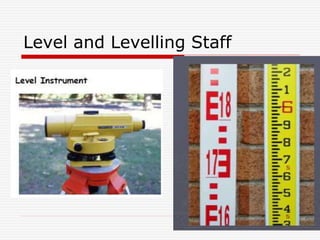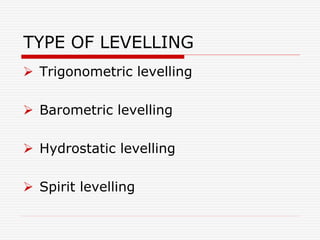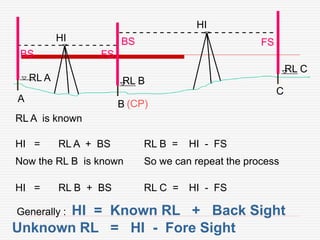Embed presentation
Downloaded 30 times










































































Levelling, also known as heighting, is the process of determining relative height differences between points on the Earth's surface. If the height of one point is known relative to a datum, then the heights of other points can be found relative to the same datum. This is done using a leveling instrument, leveling staff, and following standard procedures such as taking backsight and foresight readings. Care must be taken to eliminate errors from things like atmospheric refraction. Results are typically recorded in a level book or form and can be reduced using methods like height of instrument or rise and fall.









































































